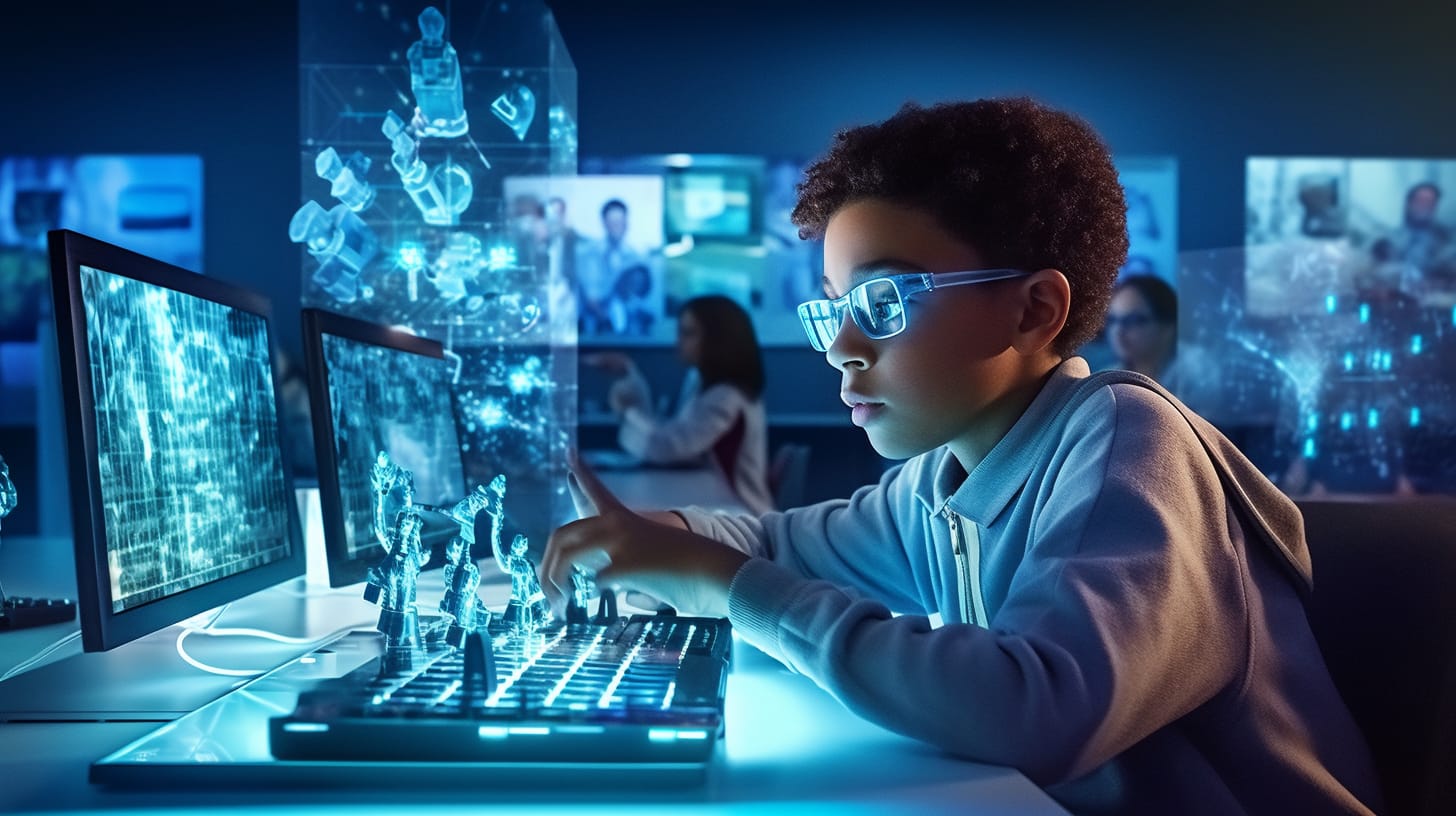People need a lifetime to become skilled members of society; a high school education diploma no longer guarantees lifelong job prospects. Now that the economy has shifted from manual workers to knowledge workers, job skills need to be updated every few years, and people must be prepared to change jobs up to five times in a lifetime. Lifelong learning implies lifelong education, which requires supportive teachers, good resources, and focused time. Traditional education (classroom lectures, texts, and individual assignments) is clearly not up to the task. Current educational practices are strained to their breaking point.
The driving force of the Knowledge Society is information and increased human productivity. Knowledge workers use more information and perform more operations (for example, compose a letter, check its content and format, send it, and receive a reply within a few moments) than do office workers who need secretarial assistance to complete the same task. Similarly, researchers now locate information more quickly using the Internet than teams of researchers working for many months using traditional methods. Marketing has been replaced by online client lists and digital advertising created by a single individual acting as author, graphic designer, layout artist, and publisher. To prepare for this society, people need education that begins with the broadest possible knowledge base; knowledge workers must be more general knowledge and learn with less support.
Information technology has generated profound changes in society, but thus far it has changed it only subtly. Earlier technologies (e.g., movies, radio, television) were touted as saviors for education, yet nearly all had limited impact, as they did not improve prior educational tools, but often only automated or replicated existing teaching strategies (e.g., radio and television reproduced lectures) (McArthur et al., 1994).
On the other hand, the confluence of the Internet, artificial intelligence, and cognitive science provides an opportunity that is qualitatively different from preceding technologies and goes beyond simply replicating existing teaching processes. The Internet, a flexible medium that merges multiple communication tools (audio, video, and two-way communication), has transformed how educational content is produced, decreased its cost, and improved its efficiency. For example, many new teaching methods (collaboration and inquiry learning) are now possible through technology. Multi-tasking and online chat are not possible before in the classroom.
An Inflection Point in Education
In human history, one technology has produced a major and long-lasting educational change: the printing press invented by Johannes Gutenberg around 1450. This printing press promoted a shift from oral to written knowledge and transformed how people thought and worked (Ong and Walter, 1958). However, the advances in human literacy resulting from this printing press were slow to catch up, taking hundreds of years as people learned to read and then changed their practices.
Now the computer, a protean and once-constantly-center-of-technology innovation, has produced changes in virtually every industry, culture, and community. It has produced more than incremental change in most disciplines; it has revolutionized science, communication, economics, and commerce in a matter of decades. Information technology, including software, hardware, and networks, is poised to produce another inflection point in education. An inflection point is a full-scale transformation in the way an enterprise operates. Strategic inflection points are times of extreme change; they may be caused by techno-logical change but are more than technological change (Grove, 1996). By changing the way business is organized, an inflection point creates opportunities for players who are adept at operating in the new environment (e.g., software vendors and e-learning companies) to take advantage of the new growth opportunity.
An example of a business inflection point is the Japanese manufacture of smaller and cheaper memory products, which created an inflection point for other manufacturers of memory products. Intel and others were forced out of the memory chip business and into the relatively new field of microprocessors (Grove, 1996). This microprocessor business then created another inflection point for other companies, causing the classical mainframe computer industry to have a difficult time. Another example of an inflection point is the automated teller machine, which transformed the banking industry. Another example is the ability to digitally create, store, transmit, and play entertainment content, which transformed the entire media industry. In short, strategic inflection points may be caused by technology, but they fundamentally change the enterprise.
Education is a fertile market within the global knowledge space, in which the key factors are knowledge, educated people, and knowledge workers. The knowledge economy depends on productive and motivated workers who are technologically literate and positioned to contribute ideas and information and to think creatively. Like other industries (e.g., health care or communications), education combines large size (roughly the same size as health care in terms of the number of customers), dissatisfied users, low use of technology, and possibly the highest strategic importance of any activity in a global economy (Dunderstad, 1998).
The future impact of information technology on education and schools is unclear, but it is likely to create an inflection point that affects all quadrants. Educators can enhance and redefine the learning process by taking advantage of advances in artificial intelligence and cognitive science and by harnessing the full power of the Internet. Increases in computing power coupled with decreasing hardware costs lead to an increase in the use of computation in all academic disciplines (Marlino et al., 2004). In addition, technological advances have improved the analysis of both real-time observations and computer-based data. For example, the science community now has tools of greater computational power (e.g., higher resolution, better systems for physical representation and modeling, and data assimilation techniques) that facilitate their understanding of complex problems. Science teachers are incorporating these tools into the classroom to encourage motivation and curiosity and support more sophisticated student understanding of science. Learners at all levels respond to computational simulations that make concepts more engaging and less abstract (Manduca & Mogk, 2002). Students who use this technology think more deeply about complex skills, use enhanced reasoning, and have better understanding and design skills (Rochelle et al., 2000).
Read Also:
- Negative And Positive Impacts Of Using Artificial Intelligence (AI) In The Information Technology Sector
- Banking History of Artificial Intelligence (AI) In India
- Opportunities Of Artificial Intelligence (AI) In Indian Banking Sector
- Artificial Intelligence In Indian Banking Sector: An Overview
- Artificial Intelligence In Healthcare
- What Are The Types Of Artificial Intelligence Tools
- Role Of Artificial Intelligence In Indian Agriculture
- Artificial Intelligence (AI) Techniques Used For Diseases Detection In Agriculture






